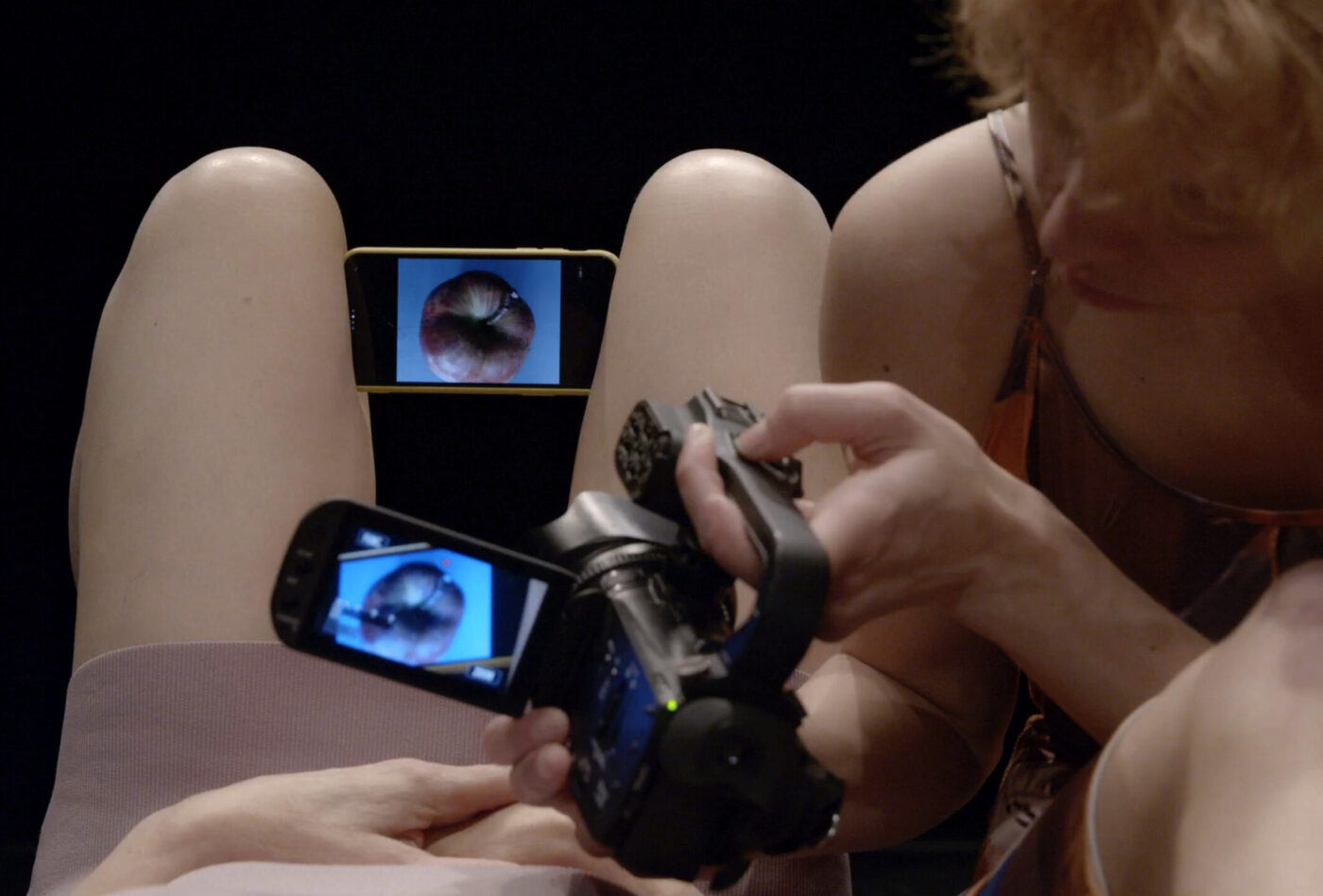
Emma-Kate Guimond
The Plot
01.18–02.17.2024
Room 1
01.18–02.17.2024
Room 1

Opening
Thursday January 18, 5pm
Artist
Emma-Kate Guimond
Consider the metaphysics of a telephone call: ringing. Hello? Maybe Silence has called. Or maybe Monster. Or the Dancer. But the Dancer comes out and starts dancing. The lights dim. A show begins.
Dear Writer, I would like you to dance but I don’t think you can pull it off.
The Plot is a video performance and a hypothetical movie plot, meaning it will unfold in its own time.
The Plot is archetypal and so are its characters: a writer wants to write but can’t, a voice actor becomes a dancer, a dancer moves like the writer. The Protagonist always arrives in a mythical mood, just after what happens before the beginning and bows at the end.
The Source is the original iteration of the movie, now lost. A post-structural prank. The Plot is a house of mirrors: reflection, refraction and translucency are thrilling!
The low grade horrorphoria of staring too long in the mirror. An abstract accumulation: the writer becomes fair and unfair (first she was only fair). A horror parable whose aesthetic and spiritual lessons, like a pile of Plexiglass, glisten obliquely.
From the directives of the scores, the performers enact the world they think they belong to. Like rituals they conjure, knee bend and let it blow away.
The Plot flickers fingers close to your eyelashes and eye balls. What are you afraid of? She can’t say. It’s just a feeling.
An open system: the indeterminacy of their relations and identities. A closed system: they show up and care for each other.
To tell your narrative to an empathic listener is to open yourself up and to dispossess yourself of the story.
The audience watching the characters enact being in a movie, feeling seen and seen feeling.
The Teller is pure action.
The Teller, in a sexy blue velvet dress, gives a final speech. The secret might be revealed. But no…
The characters exist in the space between a telephone ring and the non-response to the call, their actions spurred by an asymmetrical demand that can never be annulled or accomplished and so is infinite. I have a crush on God and I want a dog to ask me what I’m afraid of. Who is the answerer?
The Plot borrows from the aesthetics of téléthéâtre while also cutting through an imagescape more reflective of the digital and social media era. Each scene is an edit from a scored improvisation, a charade that creates and amplifies the sensations in the movie. Choreographies and editing are here like surfaces. The heels tiktok, the tights slide, the piano carries the dancer’s movements as Isadora her veil. Embodied visual concepts, like blur, zoom and transparency are explored in their expanded political meaning.
The Teller, active and alive, reiteratively tells the story that the three characters (The Protagonist, The Writer and The Voice Actor, who eventually becomes the Dancer) perform like an inherited emerging pattern. These characters, interrupted and never fully recovering themselves, make tremble at every distinction the stability of entities and concepts. In other words, the process of differentiation of their identities is in correlation to the indeterminacy of their relation, in which they are distinct and yet not separate. Who came first — the characters or the plot?
Underscoring The Plot is the absence of the original iteration of the story that Emma-Kate names The Source. This originary loss is intrinsic to the whole and, like dark matter or the strange impossibility of being present at your own birth, puts pressure on our grasp of time. We all need a Teller for our Protagonism.
There is a tenderness between the three performers/characters and their efforts at telling the story. Faithful to the task, they cradle the opacity of The Source, the profundity of their interdependence and then let it go, over and over, like a breath.
—hanako hoshimi-caines
This project has received the support of the Canada Council for the Arts (CCA), PRIM and CCOV.





